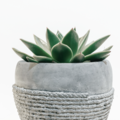
In a world where modern medicine often reigns supreme, ancient healing practices are experiencing a renaissance. One such practice, cupping massage therapy, has surged back into the limelight, captivating the attention of wellness enthusiasts and skeptics alike. Originating from traditional Chinese medicine, this centuries-old technique involves placing cups on the skin to create suction, believed to stimulate blood flow and promote healing. With its resurgence in popularity, cupping massage therapy is garnering attention for its potential benefits and intriguing approach to holistic health.
Ancient Roots, Modern Applications
Cupping therapy traces its origins back to ancient Egypt, China, and the Middle East, where it was used for a myriad of health conditions ranging from pain relief to detoxification. The technique involves placing cups—traditionally made of glass, bamboo, or silicone—on specific points of the body. Through either heat or suction, the cups create a vacuum effect, drawing the skin upwards into the cup. This process is thought to release muscle tension, improve circulation, and stimulate the flow of vital energy, known as Qi in traditional Chinese medicine.
A Therapeutic Renaissance
In recent years, cupping massage therapy has gained widespread attention in the wellness community and beyond. Athletes, celebrities, and everyday individuals have embraced this alternative therapy as part of their wellness routines, citing benefits such as pain relief, relaxation, and improved sports performance. Advocates of cupping massage therapy claim that it can alleviate various ailments, including muscle soreness, back pain, and even respiratory issues.
As interest in holistic wellness grows, so does the exploration of different cupping techniques and methods. From traditional fire cupping to contemporary silicone cups, each approach offers unique benefits and applications. Let's delve into the diverse world of cupping massage and discover how these techniques are performed.
1. Traditional Fire Cupping:
Dating back thousands of years, traditional fire cupping remains one of the most well-known forms of cupping therapy. In this method, glass cups are heated using a flame to create a vacuum effect before being placed on the skin. As the air inside the cup cools, it creates suction, drawing the skin upwards into the cup. Practitioners may leave the cups stationary or move them across the skin to target specific areas. Fire cupping is believed to promote circulation, relieve muscle tension, and stimulate the flow of vital energy, or Qi.
2. Dry Cupping:
Dry cupping, also known as stationary cupping, involves placing cups on the skin without any additional manipulation or movement. Once the cups are in position, they remain stationary for a set period, typically ranging from five to fifteen minutes. This technique is often used to target localized areas of tension or pain, such as the back, shoulders, or legs. Dry cupping is favored for its simplicity and effectiveness in promoting relaxation and relieving muscle stiffness.
3. Wet Cupping (Hijama):
Wet cupping, or hijama, is a variation of cupping therapy that involves making small incisions in the skin before applying the cups. Once the cups are in place and suction is established, the practitioner removes them briefly to make shallow cuts on the skin's surface. This process is believed to facilitate the removal of stagnant blood and toxins from the body. Afterward, the cups are reapplied to draw out any remaining impurities. Wet cupping is often used in traditional Islamic medicine and is purported to have detoxifying and cleansing effects.
4. Silicone Cupping:
In recent years, silicone cupping has gained popularity as a modern alternative to traditional glass cups. Silicone cups are flexible, durable, and easy to use, making them a preferred choice for both practitioners and clients. Unlike fire cupping, silicone cups do not require heating and can be applied directly to the skin. They come in various sizes and shapes, allowing for targeted treatment of different body parts. Silicone cupping is favored for its convenience, versatility, and gentler approach compared to traditional methods.
5. Dynamic Cupping (Moving Cupping):
Dynamic cupping, also known as moving cupping, involves applying oil or lotion to the skin before placing the cups. Once suction is established, the practitioner moves the cups across the skin in a gliding or rolling motion. This technique combines the benefits of massage with the therapeutic effects of cupping, making it ideal for addressing muscular tension, scar tissue, and fascial restrictions. Dynamic cupping is often used by massage therapists and bodyworkers to enhance circulation, improve mobility, and promote tissue healing.
Exploring the Possibilities
As the popularity of cupping massage therapy continues to grow, so too does the diversity of techniques and methods available. Whether seeking relief from pain, stress reduction, or a holistic approach to wellness, individuals have a range of options to explore within the world of cupping therapy. From traditional fire cupping to innovative silicone cups, each technique offers its own unique benefits and applications. As practitioners and researchers continue to study the effects of cupping massage, the potential for integrating these ancient healing practices into modern healthcare approaches remains promising.

Jace Grandmaison
Contact Me
